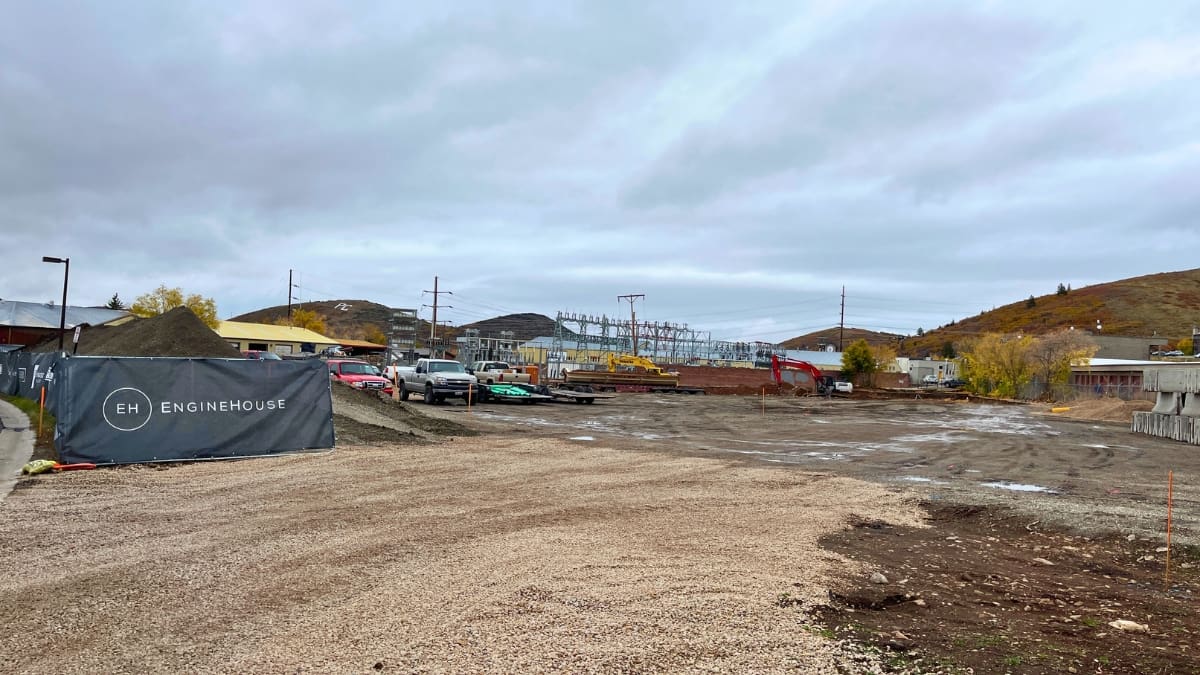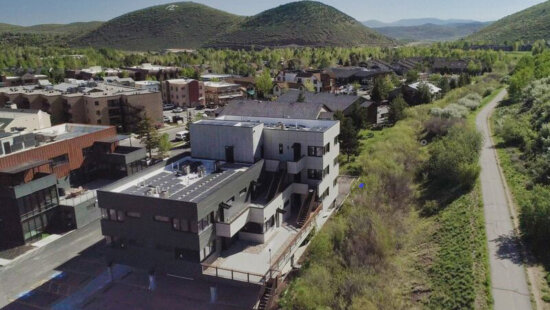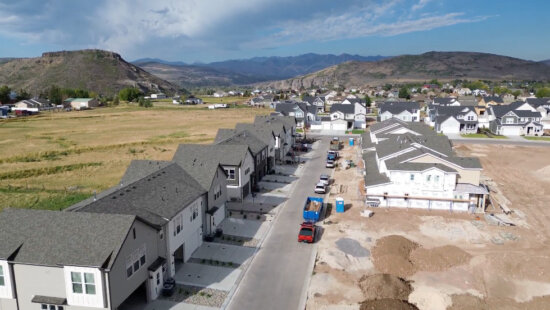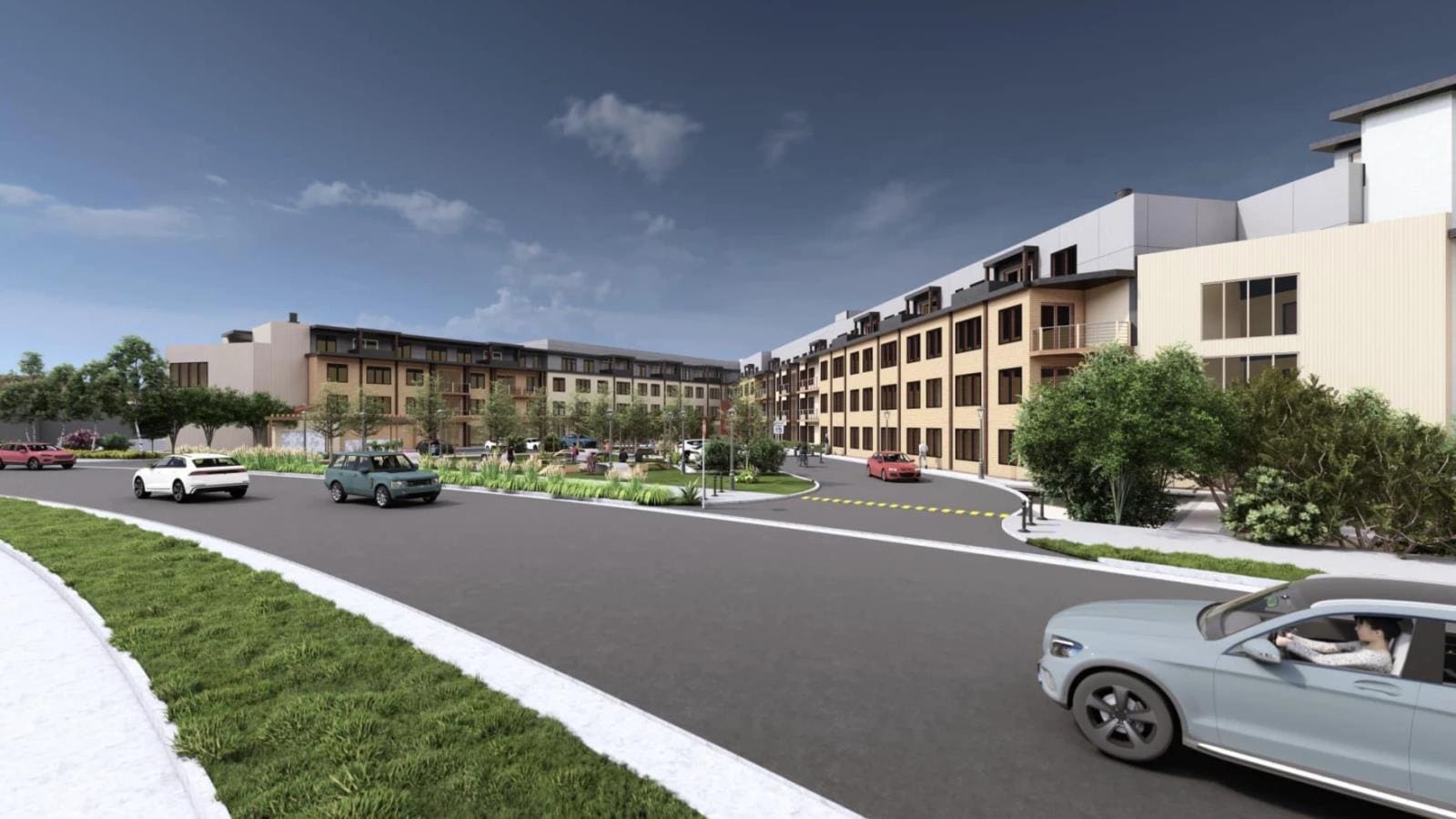Politics
Utah Legislature to consider statewide housing plan, upzoning in 2025

The Engine House affordable housing development gets underway. Photo taken October 12, 2023. Photo: TownLift
State leaders working on setting ‘statewide overlay’ with potential upzoning elements. Other ideas include allowing more ADUs, regulation on short-term rentals
Details are still taking shape, but state leaders focusing on housing policy are working on a slate of recommendations for the Utah Legislature to consider next year, including drafting a statewide housing plan meant to pave the way for affordable, owner-occupied homes.
Other proposals being discussed include legislation to allow more detached accessory dwelling units — or mother-in-law apartments — as well as loosening the state’s restrictions on cities’ abilities to regulate short-term rentals.
That’s by no means an exhaustive list. There could be many more pieces of legislation in the works. But those are some of the most noteworthy policy changes being discussed in the months rounding out 2024 and heading into the beginning of the Utah Legislature’s 2025 general session, which is scheduled to begin on Jan. 21.
Lawmakers are acting in response to a legislative audit released in November in which auditors estimated Utah needs to see nearly 28,000 new housing units built a year to simply keep up with the state’s projected population growth.
In their report, legislative auditors called on Utah lawmakers to create a statewide strategic housing plan, noting there is “currently no state-level forecast of housing needs, or efforts to set statewide housing strategy or measure progress toward a common goal.”
Earlier this year, lawmakers on the Political Subdivisions Interim Committee voted to open a committee bill file to work on the audit’s recommendations. Since then, Steve Waldrip, Gov. Spencer Cox’s senior adviser for housing strategy and innovation, and a pair of lawmakers — Rep. Stephen Whyte and Sen. Lincoln Fillmore, who both chair the state’s Commission for Housing Affordability — have been working on crafting legislation.
It’s not done yet. But in recent weeks and months, Waldrip, Fillmore and Whyte have briefed the Political Subdivisions Interim Committee on their work, and proposals are starting to take shape.
Meanwhile, other lawmakers are trying to tackle the issue from other angles. Rep. Ray Ward, R-Bountiful, wants to take a more drastic step. Last week, he presented draft legislation that would make single-family homes and accessory dwelling units a “permitted use” on any residential lot size in urban cities — or another version of the bill that would be more targeted at making more affordable single-family homes a permitted use.
Another lawmaker, Rep. Neil Walter, R-St. George, has also said he intends to run a bill to re-evaluate the Legislature’s passage of HB253 in 2017, which banned cities from prohibiting Utahns from listing their homes on short-term rental websites.
Here’s a breakdown of some of the legislation that’s being discussed and what’s taken shape so far:
Statewide plan and an ‘overlay’ with possible upzoning
In a presentation to the Political Subdivisions Interim Committee in August, Fillmore and Whyte outlined how they plan to address legislative’ auditors’ recommendations.
Firstly, legislative auditors recommended the Legislature to consider changing land use laws at both the county and city levels to “clearly emphasize housing production and affordability as primary goals of land use regulations.
Fillmore said they’re working on language to make housing production and affordability an “express goal” in Utah’s Land Use, Development and Management Act. He also said they’re working on creating a new “independent appeal” process developers can turn to for land use decisions besides the courts, perhaps through the property rights ombudsman or another office. Fillmore said that’s meant to streamline appeals and reduce costs.
Legislative auditors also recommended the Legislature to consider ways to increase zoning density “on a wide scale” throughout the state — in other words, allow “upzoning” or some level of increased density in all residential areas. Fillmore pointed to what states like Montana and Arizona have done.
In 2023, bipartisan legislation nicknamed the “Montana Miracle” enacted a slate of measures to override local zoning ordinances to encourage more multifamily homes and ADUs. That law had been tied up in the courts, though last month the Montana Supreme Court issued a decision paving the way for a pair of state laws to take effect over the objections of homeowners.
Arizona earlier this year also passed a pair of laws that required large cities to permit “missing middle” housing near city centers and ADUs on all single-family lot sizes.
Fillmore said Montana and Arizona’s models may not be “the exact right fit for Utah, but we do recommend that there be some sort of allowance for a certain level of density in all Utah residential zones.”
Fillmore pointed to last year’s legislation that created an arsenal of new tools for cities to create project areas that could leverage financing to encourage private developers to build more affordably-priced, owner-occupied single-family homes and said lawmakers can build on that approach.
“We’ve got a good foundation to build on,” Fillmore said, but he added so far the laws passed trying to tackle Utah’s housing affordability issues have “been more like rifle shots.” Now, he said the state should take a broader approach by creating a “state overlay zone for what’s currently zoned residential to allow some kind of agreed upon density.”
Earlier this month, Waldrip told Utah News Dispatch in an interview after a panel discussion on how smaller home designs are needed for more affordable housing options that the statewide plan is still taking shape, but the 2025 session will likely include discussions about what the overlay will entail. He said it’s possible that a “full blown” statewide plan may not be ready for the 2025 session, but they can take steps to get it started.
Waldrip said those discussions will likely include a focus on “regional” needs and what different types of cities will need to accommodate their housing demands rather than a one-size-fits-all approach. He also said it will likely contemplate not just affordability requirements, but also owner-occupied requirements.
Waldrip said cities, counties and the state have previously worked together when it comes to planning transportation or infrastructure like water and sewer lines. However, he’d like to see regional cooperation for housing, too.
“That, to me, would be the ultimate goal. If we can get there, we won’t need to do state preemption, but, but it’s always on the table,” Waldrip said. “And that’s one of the only things, probably, that moves that needle toward people wanting to have those regional discussions.”
Fillmore said he’s also working on legislation to add additional penalties and incentives for cities so they adhere to housing planning requirements, including withholding state funds for local roads and prioritizing infrastructure grants or loans to cities that are in compliance.
While the Utah Legislature has recently loosened restrictions on internal ADUs (like basement apartments), Fillmore said lawmakers should also consider breaking down barriers for external, detached ADUs on single-family lots that are large enough to accommodate them.
Requiring cities to allow ‘affordable’ single family homes, ADUs
Ward last week presented two versions of legislation to loosen restrictions on both single-family housing and accessory dwelling units by making them “permitted uses” on residentially zoned properties.
One would be more broad and essentially require urban cities (or cities of the first or second class, meaning they have populations above 100,000 or 65,000) to approve a single-family housing project regardless of lot size. The same would be required for external or internal ADUs as long as they’re built in a residential zone and on a lot that already hosts a single-family home.
Knowing the bill would face pushback from local leaders represented by the Utah League of Cities and Towns — which opposes restricting local land use authority — Ward proposed another version of the bill that would be more targeted to affordable housing, or making single-family homes that are sold to their first owner at a price that’s less than the area’s median single-family home price a permitted use.
That version of Ward’s bill would also allow cities’ abilities to enact some regulations, like the ability to require the affordable home to be built on a lot size that is at least 3,500 square feet, have two off-street parking spaces, have front and rear setbacks of up to 10 feet, and be no more than two stories tall. However, the bill would also restrict cities from requiring more than that.
To Ward, Utah’s efforts in recent years to tackle the affordable housing crisis has been “nibbling around the edges” of the issue.
“To me, many of the things we’ve passed seem less likely that they’ll make a big, long-term difference,” Ward said.
To really make an impact, he said the state needs to take broader, more drastic measures.
“If we’re going to have a chance to make things more broadly affordable across the state, we need to at least consider some way of making it easier, putting less obstacles in front of building smaller, single-family homes widely across urban areas of the state,” Ward said.
He welcomed feedback from lawmakers on the Political Subdivisions Interim Committee as he continues to work on the legislation. Rep. Jim Dunnigan, R-Taylorsville, balked at such broad allowances for accessory dwelling units, and encouraged Ward to consider narrowing his bill so it exempts existing neighborhoods and targets new developments.
“I think that just destroys my subdivision,” Dunnigan said, opposing the idea of allowing anyone with enough room on their lot to build an accessory dwelling unit in their front yard, leading to parking problems and possibly straining city infrastructure for water and sewer.
“It doesn’t work for me. I just do not want my neighbor to build another home in his front yard or right next to my backyard, when that’s not what I bought when I moved in there,” Dunnigan added, though he said he wouldn’t be opposed if it were limited to new developments.
The committee’s chairman, Sen. Mike McKell, R-Spanish Fork, echoed Dunnigan’s concerns.
“I don’t mind the idea of upzoning, but upzoning in existing neighborhoods … becomes hard because cities have already put in a certain level of infrastructure to accommodate for that,” McKell said.
Ward acknowledged that the Utah League of Cities and Towns “doesn’t like the bill” because it would restrict local land use authority, but he argued at some point state leaders need to play a bigger role in addressing the state’s housing needs for the state’s future population, and not just its current population.
Cameron Diehl, executive director of the Utah League of Cities and Towns, told Dunnigan and McKell they hit on the “key reasons why our 1,400 mayors and city council members are concerned about the state” making land use decisions rather than local governments, since local leaders are ultimately responsible for infrastructure and services for housing developments.
Diehl, however, said the League is “actively engaged” with Fillmore and Whyte while they work on the statewide housing plan because “we want to be part of the solution on how we plan for growth and how we’re seeking to improve housing affordability and increase home ownership.”
By Katie McKellar, Utah News Dispatch




















